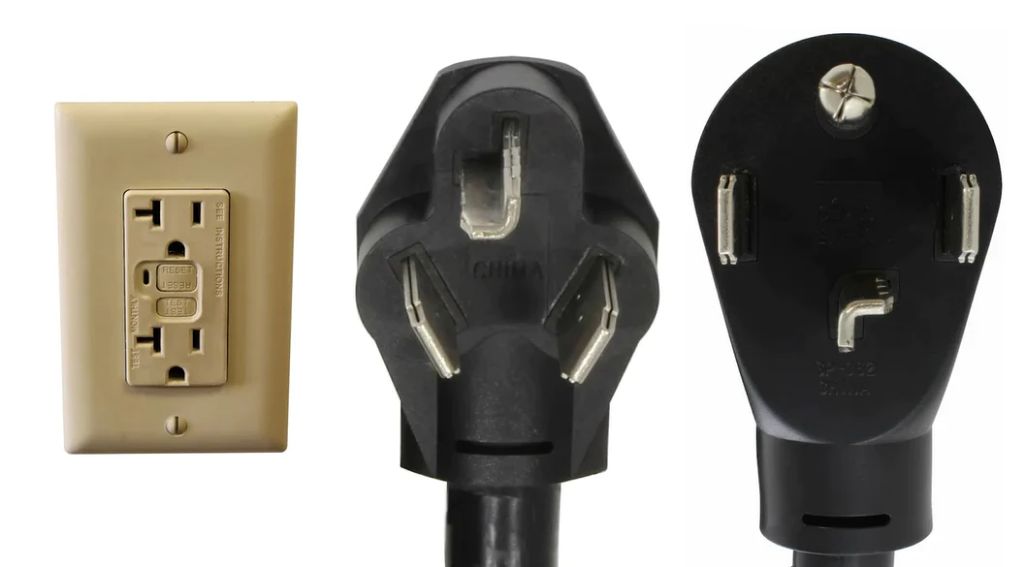The short answer is no, you cannot plug a typical 240-volt electric dryer into a regular 120-volt outlet. Most electric dryers require a dedicated 240-volt circuit and outlet to operate safely and effectively.
Page Contents
Why Electric Dryers Need 240 Volts
Electric dryers have heating elements that produce heat by passing electricity through resistive coils. It takes a lot of power to generate enough heat to dry clothes effectively. A 120-volt, 15-amp circuit (the typical outlet in a home) can only deliver about 1,800 watts safely. But an electric dryer may require 5,000-6,000 watts or more to operate properly.
By using 240 volts instead of 120 volts, the dryer can draw more current and power through the heating coils. Doubling the voltage allows the dryer to produce quadruple the power using the same 15-20 amp circuit. That’s why most electric dryers are designed for a 240-volt power supply.
Dedicated 240-Volt Circuit for an Electric Dryer
In addition to requiring 240 volts, most electric dryers need a dedicated circuit to operate safely. This means the circuit only supplies power to the dryer and isn’t shared with any other devices. A typical electric dryer 240-volt circuit is rated for 30 amps.
The circuit consists of:
- A two-pole circuit breaker in the main service panel
- 10 or 12 gauge wiring
- A 30-amp NEMA 14-30 receptacle
This dedicated circuit and receptacle are specially designed to provide the voltage, amperage, and power necessary for an electric dryer. Plugging the dryer into a regular 120-volt outlet could overload the outlet and circuit wiring. This could cause a fire through overheating.
Converting a 4-Prong Dryer Outlet
If your home only has a 120-volt outlet where you want to install the dryer, the electrical circuit will need upgraded. The typical solution is to install a new 240-volt circuit with the correct 4-prong receptacle. In some cases, it may be possible to convert an existing 4-prong dryer outlet from one voltage to another with a simple wiring change.
Changing the wiring for the outer two terminals converts the receptacle from 240-volt to 120-volt. However, this is only possible if the existing circuit wiring is rated for the amperage load of the dryer. A qualified electrician should assess the circuit and perform any outlet voltage conversions.
Using an Adapter is Not Recommended
Some people consider using an adapter to connect a 4-prong dryer plug to a regular 120-volt outlet. This is not recommended and is a major safety hazard. Typical household outlets and circuits are not designed to handle the current draw of an electric dryer. The adapter may overheat or even melt, leading to fire and shock hazards.
Adapters can also allow for reverse polarity connections, which can damage the dryer and void the warranty. Proper installation of a dedicated circuit and outlet is always the correct solution. Don’t take shortcuts that could endanger your home and family.
Other Dryer Options for 120-Volt Outlets
If installing a new 240-volt circuit and outlet for an electric dryer isn’t possible, there are a couple options that will work with a 120-volt outlet:
- Gas dryer – Gas dryers use natural gas or propane for heating. Only 120-volts is required for operation of motors and controls.
- Vented compact dryer – Smaller compact dryers are available that run on standard 120-volt household current.
- Condensing dryer – Condensing dryers use a sealed system that doesn’t require external venting. Models are available that plug into a 120-volt outlet.
While you may have to compromise on dryer capacity or efficiency, one of these dryers can be an alternative solution if a 240-volt outlet installation is not practical.
Key Takeaways
- Most electric dryers require 240 volts to power heating elements that reach optimal drying temperatures.
- A dedicated 30 amp circuit with a NEMA 14-30 receptacle is typically required.
- It’s unsafe and unwise to use an adapter to connect a 240-volt dryer to 120-volt outlet.
- Consider a gas dryer or 120-volt compact/condensing dryer if a new 240-volt circuit isn’t possible.
Conclusion
Plugging a 240-volt electric dryer into a 120-volt outlet goes against manufacturer specifications and electrical safety standards. The best solution is installing a dedicated 240-volt circuit with the matching receptacle, or choosing an alternative dryer designed for standard 120-volt household current. Never bypass safety with makeshift adapters. Following proper procedures ensures safe, effective, and long-lasting dryer operation.
